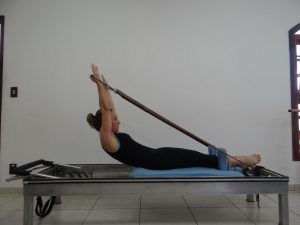You’ve been suffering from back pain for longer than you care to remember. Some days can cope with the pain, but others, it’s downright debilitating and getting up off the couch is impossible. You don’t want to rely on medication, and while surgery may help, it’s the last thing you want to do. You can’t help but wonder if you are fated to a life of pain.
The good news is there is a way to reduce our chronic back pain, improve your mobility, and get your life back. There aren’t any medications or surgeries involved, either! No, we’re not talking about a miracle (though you might find it to be quite miraculous); we’re talking about physical therapy!

Physical therapy has successfully helped people of all ages and with various types of injuries, illnesses, and medical conditions that cause pain or limit mobility regain their physical abilities and get their lives back.
Often, primary care doctors recommend physical therapy for chronic back pain. Unlike surgery, it’s non-invasive, and unlike medications, it isn’t habit forming.
If your healthcare provider has suggested physical therapy for your back pain and you’re wondering how it will help you, keep on reading to learn more.
Types of Physical Therapy for Back Pain
Several modalities are used in physical therapy to treat chronic back pain. These include:
- Passive Therapy. Passive therapies include modalities that a physical therapist does to a patient. In other words, the patient doesn’t participate in these therapies, but rather the therapist executes them. Passive therapies can include:
- Application of hot and cold treatments
- Electrical nerve stimulation
- Massage
- Acupuncture
- Ultrasound
- Active Therapy. Active therapies refer to any treatments that the patient is actually involved with. In other words, the patient participates in the therapy. Exercises that aim to strengthen the muscles and joints in the back and learning more efficient ways to move in order to reduce pain are used in active therapy. Rest might also be considered active physical therapy for back pain, as the patient must actively choose not to participate in certain activities. The self-application of passive therapies can also be considered an active form of therapy, as patients must execute things like massage or electrical nerve stimulation on themselves.

Usually, a combination of both passive and active physical therapy is used to treat chronic back pain.
Benefits of Physical Therapy for Chronic Back Pain
Physical therapy can provide several benefits for patients who suffer from chronic back pain. Here’s a look at some of the benefits that you could experience:
- Reduction or Elimination of Pain. Without a doubt, one of the most troubling things about chronic back pain is the discomfort it causes. The combination of passive and active therapies can strengthen the muscles and joints in the back and teach you how to move properly, which can reduce or completely eliminate your pain.
- Increased Mobility. The pain you are experiencing has likely limited your mobility. For example, you might be having trouble bending, walking, lifting, standing up, sitting down, or moving from side-to-side. Your physical therapist will apply treatments and teach you exercises that will reduce your pain and strengthen your back, which will restore your mobility.
- Avoid Surgery. If physical therapy helps to significantly reduce your back pain and improves your mobility, there is a very good chance that you could avoid having surgery. If surgery is still needed, participating in physical therapy beforehand will aid in your recovery, minimizing your pain and helping you heal quicker.
- Improved Well-Being. When you are in pain all the time and your movement is limited, there’s no doubt that your happiness and quality of life are impacted. The reduction or total elimination of pain and the ability to move freely and confidently will allow you to enjoy a significant improvement in your overall well-being.
How Physical Therapy Works
Before actual physical therapy begins, you will meet with a therapist for an intake assessment and a physical evaluation. You will be asked specific questions about your condition. A therapist will also go over any medical records to determine if a specific condition is causing your pain, and if so, the role that condition is playing in your discomfort. You will receive a physical examination. Your back will be examined and you will also be asked to perform certain tasks so that the therapist can see, first-hand, the impact of your back pain.
The physical therapist will use the information that is acquired during your intake assessment and physical exam to create a treatment plan that will be customized to your specific needs. Since every patient is different, an individualized therapy plan is important. Your plan will include therapies that aim to improve your pain and restore movement. Once a course of action is devised, you and your therapist will begin treatment. The duration of treatment, including the length and number of sessions, will depend on your specific case. Your therapist will perform evaluations throughout treatment to determine your progress.
If your doctor has recommended physical therapy for your chronic back pain or if you think it is an option that could help you, give us a call today. We will be happy to meet with you and discuss how we can help minimize your pain and most importantly, restore your life.

